![Cara Kuhlman [right] leads a walking tour for her news outlet, Future Tides. Tour participants hold a sign reading “Future Tides.” Cara Kuhlman [right] leads a walking tour for her news outlet, Future Tides. Tour participants hold a sign reading “Future Tides.”](https://rjionline.org/wp-content/uploads/sites/2/2025/03/iif25031905-1024x576.png)
Cara Kuhlman (right) leads a walking tour for her news outlet, Future Tides. Tour participants hold a sign reading “Future Tides.”
Walking tours for community engagement
A conversation with Cara Kuhlman, Future Tides
Cara Kuhlman, founder and editor of the independent newsroom Future Tides, is passionate about covering how people in the Pacific Northwest interact with local waterways. Using her knowledge of business journalism and her experience as a journalist and sailor, Kuhlman founded Future Tides to promote a more ethical form of digital media in Seattle.
One of Kuhlman’s newer projects through Future Tides is free walking tours, which she offers to better connect with the local community and reach those interested in Seattle’s waterways. Now scheduling tours within two-month periods, Kuhlman has led five tours, which attracted around 30 total people.
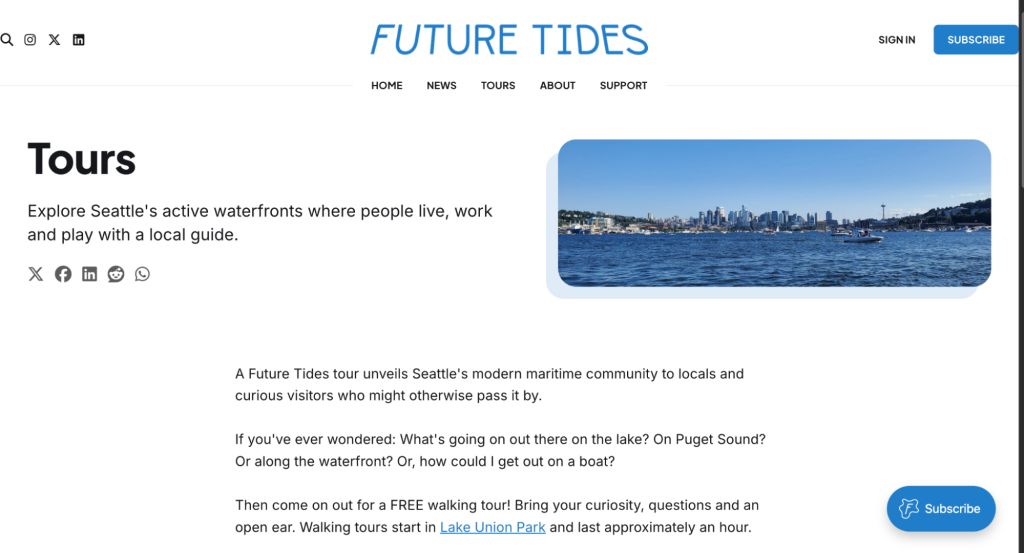
Audrey Novinger: Can you describe Future Tides’ walking tour project and how you came up with the idea?
Cara Kuhlman: I knew I didn’t want to do events as part of my publication, but I wanted something that was in-person and not behind the screen, so I scouted around and decided I could do a walking tour through a park along Lake Union, which is in the center of Seattle. I could talk about all of the different uses of the lake, the nonprofits and organizations along the lake and overall touch on a lot of the Future Tides coverage.
I contacted the city park, and they said as long as I kept it free, I could do tours without a permit for up to 50 people. So, that became the plan, and I did it last year for the first time.
Novinger: What was your overarching goal when you started this project?
Kuhlman: It was part of my final presentation in the CUNY program that my three sources of revenue were going to be sponsorship, tours and membership. The reasons for each of those: I have experience running a membership program, and I really wanted an audience-driven form of revenue because I think that model creates a unique sense of accountability. I also have experience using sponsorship as a way to engage with companies. The tours offer something that’s in-person and a little unique, and they meet the audience engagement and revenue goals. Tours were the thing I knew the least about, but felt excited about.
I’m really glad because a lot of people are curious and excited about the tours. I really think that doing it has helped me stay energized through the year because so much of the work I do is on a laptop at home, behind the scenes.

Novinger: What are some of the ways you engage people during the tour?
Kuhlman: Especially because they’re smaller groups, I have everyone share their connection to the water in a circle before we start walking. There are a couple of parts of the route where we just walk from Point A to Point B, and by sharing at the kickoff, people would start chatting with each other a little bit more. It also really helped people realize like, ‘Oh, you’re you work on oil tankers, and I live at the marina,’ or, ‘I just bought a boat, and I didn’t know that people did those two things’ so to kind of understand that they all have that connection and the diversity of experiences that were being represented.
Novinger: Is there any other reason you chose to do walking tours instead of virtual tours or an interactive map?
Kuhlman: I say that it’s a tour for locals and curious visitors. I see it as a way to bring a new audience in and for people to learn more about their own local waterfront. And I just think standing next to the water and having that sense of place, or seeing a seaplane take off— we saw a beaver on one of the tours in a pretty urban area— so I know that that’s not going to be as effective if you’re not in that place. It also is a way for me to meet with members and current subscribers that I might not have met yet, so it’s almost like creating office hours.
Novinger: What are the steps you took to get this started?
Kuhlman: I used to be a sailing instructor and sailing coach, so I would do lesson planning and put together curriculums and have to adapt to different groups, boats and conditions. So, I went and I walked around, and then I brought my husband and walked him around, and then I scripted the tour. I did a lot of research because there were a lot of things I knew, but I wanted to fact check and get a little more rigorous with the tales I was repeating. I’ve lived in the Seattle area since 2012, and I started coming here in the summers in 2009, so building that knowledge and that expertise over the years helped a lot.
Novinger: How did you decide which locations to include?
Kuhlman: I was really trying to think of places that were public and represented the intersection of recreational and commercial maritime interests, Lake Union is one. There’s still a lot of commercial activity there, but then there are tons of paddlers and people sailing and all sorts of things happening. The other location I’m hoping to add this year is the Seattle waterfront, which is actually in a different body of water.
Long term, my goal is to have boat-based tours, whether that’s partnering with a local operator or getting my captain’s license and then figuring out a boat situation where I would be leading the tours myself.
Novinger: Is your tour route the same each time? What changes do you make from one tour to the next?
Kuhlman: Each tour, I would get audience questions that I would research and incorporate into the next tour. I really honed my route and the topics people seemed more interested in. I also have topics correlated to where we are. Seaplanes are a floating topic, so I wait for one to take off or land, and that cues the discussion. If one hasn’t taken off by the halfway point, then I might talk about it anyway. People also ask questions during the tour, so I have time pegs for where I want to be physically, and I’m okay at meeting those, although sometimes I run over. I tried to make tours an hour, but I think I will list them as 90 minutes because I found it very hard to stick to that hour.
When I was walking by myself and practicing, it was doable. But once you start adding that engagement and conversation, which is such a core part of the tour, it is not.
Novinger: How do you outline or script the tour?
Kuhlman: I use Notion for my script, and I use the toggle feature, which actually now you can do this in Google Docs. So I toggle a section open, and I go over those items and then I toggle it close. I have a couple of visuals, but I’ve had technical problems trying to show them on my iPad without Wi-fi. But there are other moments where I do want to show examples like, “this is the aerial view,” or “this is what it used to look like here,” in addition to what they’re seeing in front of them.
Novinger: Why do you choose to offer free tours? Do you plan to keep future tours free?
Kuhlman: By keeping it free, not only did that simplify my registration and my permit logistics, it also really took a lot of pressure off me, to feel like I had to deliver something people felt was worth paying for.
I would like to always have a free tour option because I do think that is a really great accessibility feature. I took a free tour in Berlin, where they are popular, and you tip at the end. It was an amazing experience that I’ve always remembered.
Novinger: What are the costs of doing the tour on your end?
Kuhlman: My time. Google Forms is folded into my workspace plan, and my website is already an existing expense. I do see revenue opportunities around the tours, and I’m hoping that there could be a potential fit with a grant that could help keep them free. I think there could be an underwriting or sponsorship opportunity with the right partner, and if one of those came through, it makes keeping them free make a lot more sense.
I also see it fitting into my membership program as a way to drive people towards that program. I don’t think I’m considering it a member benefit, but maybe a certain kind of tour becomes a member benefit. In general, I’ve got a couple of grants that are supporting my work. I have a grant from LION Publishers, and I got a Press Forward grant last year.
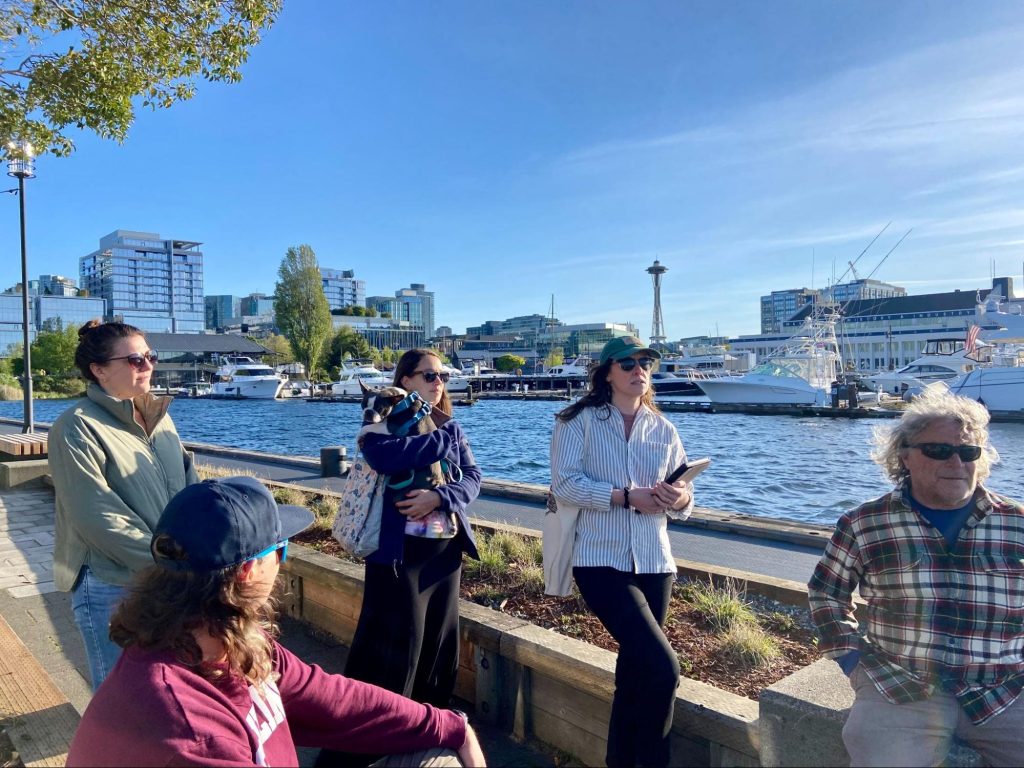
Novinger: How did you promote the walking tour?
Kuhlman: I did a very simple post announcing the tour, and I created a landing page and an announcement page on the website. Then, I just kept pointing to that landing page. I primarily marketed to my email list and on my social media, both my personal and Future Tides’. Instagram and LinkedIn are the two main platforms I use for Future Tides, and then, I did a Google form for registration.
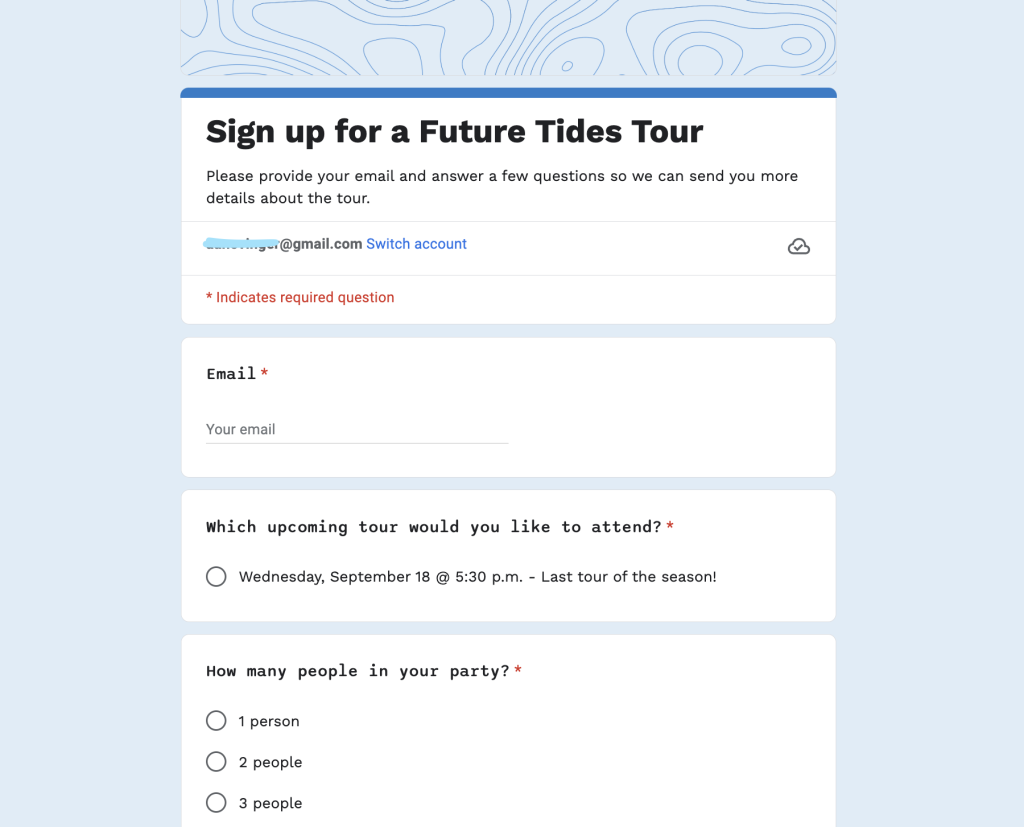
A couple of days before the tour, I have a template email I send to everyone who registered. I didn’t mess with any ticketing or registration system. I’m familiar with those, and I will probably add that later this year. But again, just really in the spirit of keeping it simple and manageable.
My follow-up email had three calls to action. One was to share photos with me because it’s hard to lead a tour and take photos of yourself. I asked people to tell others about the tour and then, if they weren’t already signed up, to sign up for Future Tides’ newsletter. I also created a feedback survey using Google Forms.
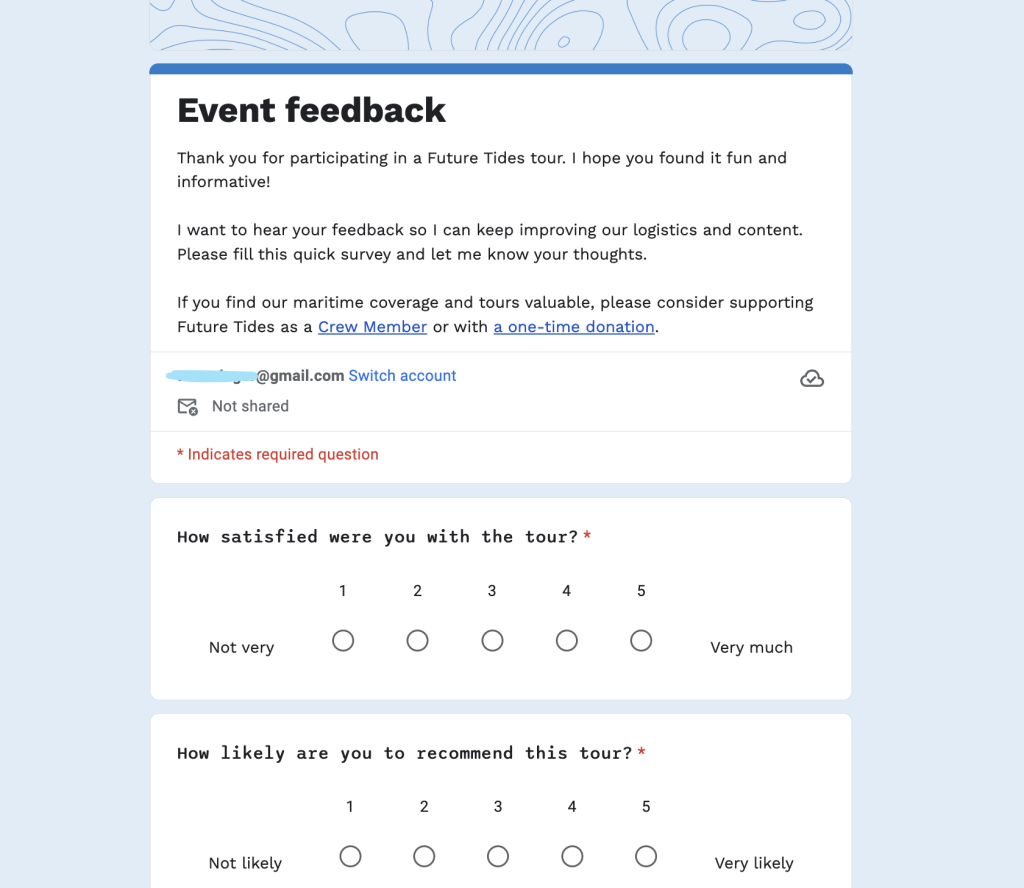
I will be promoting more this year, maybe with paid social media. Really, I’m just going to try to connect with other organizations in the community that have newsletters that have their own audiences and go through more of a community partnership route. I’m hoping to connect a little bit more with some of the businesses that are near the walking tour route, as well.
Novinger: Do you know how many of the tour attendees discovered Future Tides through the walking tour, or were most of them already aware of you? How did you measure that?
Kuhlman: I can’t remember the exact numbers, but I did have a stat in my presentation for the LION Summit that 30% of my new subscribers came through the tours, which isn’t a huge number because I’m still really growing my audience, but it definitely was a contributor.
Novinger: What advice do you have for other newsrooms looking to try something similar?
Kuhlman: Just starting small and maybe going for a walk with your most loyal supporters could go a really long way. It’s kind of fun when you say “journalism” and “tours,” and people are like, “What?”
I really think people are taking in information in more ways than ever, and there’s no reason that one of those formats cannot be an in-person walk and talk.
Editor’s Note: This interview has been edited for clarity and brevity.
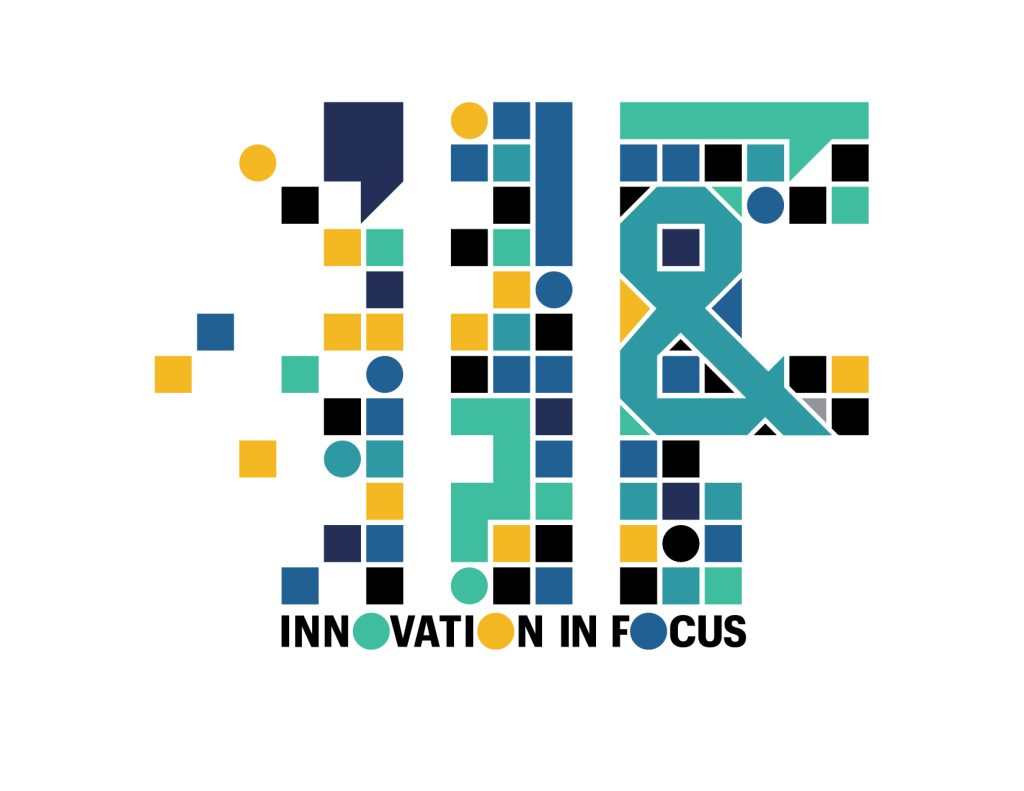
Sign up for the Innovation in Focus Newsletter to get our articles, tips, guides and more in your inbox each month!
Cite this article
Novinger, Audrey (2025, March 19). Walking tours for community engagement. Reynolds Journalism Institute. Retrieved from: https://rjionline.org/news/walking-tours-for-community-engagement/
